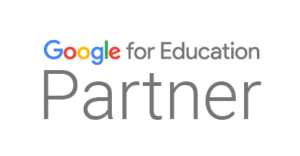Digital transformation in education reshapes the entire school ecosystem and strengthens every essential process. Schools often buy devices and expect instant improvement, yet real impact arrives when systems work together seamlessly. Leaders must recognize early signs of inefficiency before these gaps begin to slow the school’s long-term growth. Daily frustrations often look normal, yet they quietly reduce productivity, weaken learning, and increase operational pressure. This blog highlights five clear indicators that show your school needs digital transformation now. Each indicator reveals a structural challenge that blocks progress and limits future readiness. When schools understand these signals, they gain a chance to evolve rather than simply patch old systems.
1. Inefficient Administrative Overload
Many schools carry a heavy administrative burden that drains valuable teaching time daily. Teachers handle attendance sheets, maintain manual grade records, prepare repeated reports, and manage unnecessary paperwork. These repetitive tasks demand energy that teachers should ideally invest in student engagement and lesson planning. Administrators also struggle with scattered information, slow approvals, and inconsistent data across multiple channels.
Digital transformation removes this overload by shifting routine tasks into automated systems. Teachers record attendance instantly through digital platforms. Assessments sync without delays and reduce unnecessary errors. Leaders track academic progress through real time dashboards that support informed decisions. When schools digitize administrative work, teams save time, reduce stress, and focus on meaningful growth.
2. Disengaged and Underprepared Students
Students demand interactive learning experiences that match their curiosity and pace. Traditional classrooms often struggle to hold attention because they rely on one way instruction and limited personalisation. Many students lose interest when lessons feel disconnected from their lives or future careers. This disengagement affects retention, creativity, and overall performance.
A strong digital ecosystem reconnects students with learning through dynamic and adaptive tools. Teachers create interactive lessons that encourage participation and deeper understanding. Students follow personalised learning paths that fit their abilities and goals. Analytics reveal individual strengths and improvement areas with clear accuracy. Schools equip learners with digital skills that support higher education and modern careers. Active learning replaces passive listening and inspires continuous growth.
3. Fragmented and Slow Communication
Schools lose significant time when communication flows through scattered channels and outdated systems. Teachers manage multiple messaging groups, while parents receive important updates late. Students miss deadlines because they receive unclear instructions or incomplete information. Administrators spend unnecessary hours following up on announcements that fail to reach everyone.
Digital transformation solves these problems through a unified communication system that brings every stakeholder together. Teachers share updates instantly without switching between apps. Parents track information through one reliable platform that offers clear visibility. Students receive structured reminders that support consistent planning and accountability. Schools build stronger trust when communication remains transparent, timely, and organised.
4. Outdated Infrastructure and Security Risks
Many schools still run on weak networks, slow devices, and minimal security protection. These limitations interrupt classes, slow staff productivity, and expose sensitive data to growing cyber threats. Hackers often target educational institutions because they hold valuable student information and operate with weak security layers. A single breach creates major financial and reputational damage.
A complete digital transformation strengthens a school’s backbone with secure networks and modern devices. Schools protect student data with multi layer security systems and strict access controls. Reliable connectivity supports smooth learning without frustrating interruptions. Updated infrastructure allows teachers to use advanced tools confidently. Leaders gain peace of mind because the entire environment stays safe, stable, and future ready.
5. High Operational Costs and Low Resilience
Traditional systems may appear inexpensive, yet they silently increase operational costs every month. Schools spend large amounts on printing, storage, maintenance, and manual processes. Errors in paperwork or data entry create additional losses and slow corrective actions. Outdated hardware demands frequent repairs that drain budgets and cause downtime.
Digital transformation reduces these hidden costs through automation, cloud systems, and efficient resource planning. Schools cut printing expenses, streamline workflows, and reduce technology maintenance needs. Leaders shift savings toward better learning experiences and faculty development. Digital ecosystems also increase resilience during unexpected disruptions. Learning continues smoothly during weather closures, health emergencies, or operational challenges. Strong digital systems protect the school from interruptions and support continuous academic progress.
These Indicators Signal a Clear Opportunity
These indicators do not represent minor issues. They reveal deep structural gaps that require timely action. Schools that ignore these warning signs fall behind quickly in a fast-changing educational environment. Digital transformation allows leaders to replace outdated practices with connected systems that support quality learning and strong institutional performance.
A future ready school does not rely on temporary fixes or scattered tools. It invests in a comprehensive digital strategy that modernizes infrastructure, improves communication, strengthens security, and empowers teachers. Digital transformation ensures long term relevance and builds a strong foundation for students who will step into a rapidly digital world.
Netoyed supports this journey by offering a free network security audit for schools. This audit identifies risks, checks infrastructure readiness, and guides leaders toward a safer and more efficient digital environment. Schools gain clarity, confidence, and a roadmap for strategic improvement. Book your free audit today and move one step closer to a smarter, safer, and future ready ecosystem.




 1st Floor, H-31, Sector 63,
1st Floor, H-31, Sector 63,